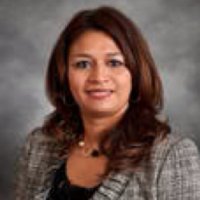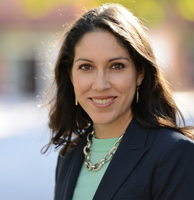I am grateful to count working in philanthropy as part of my career; I have over 20 years of experience in the field of philanthropy. I have been a staff member, fellow, and/or consultant with at least 20 community foundations in San Diego, San Francisco, Slovakia, Vancouver, and along both sides of the Mexico-US border. I have also provided workshops and trainings for family foundations throughout the United States and have done contract work for at least two corporate foundations. My career has afforded me amazing opportunities including sharing a meal with some of the largest philanthropist in California….you know the ones whose names are on buildings. What I have learned through the years is that Latinos are some of the most passionate philanthropist I know.
For many, philanthropy means giving large donations to nonprofits, houses of worships, or educational institutions. The truth is that philanthropy is much broader. According to the Merriam Webster Dictionary, philanthropy means: 1. goodwill to fellow members of the human race. 2. an act or gift done or made for humanitarian purposes. We all have stories of our grandmothers, providing meals and housing to friends in need. Maybe your first memory is putting some coins in the offertory basket at church or bringing canned food to the temple during the high holidays. Did your mom volunteer in your class or school? As a family, did you come together to make tamales or empanadas to be sold to support a community need or opportunity? Moreover, I bet most of us donated the clothes and toys we outgrew to others in the community. These are all gestures of goodwill toward others and thus philanthropy.
Most of funding for nonprofits and schools comes from government. Having said that it is important to note the power of private giving. In 2014, total private giving in the United States was $358.38 billion, which was an increase of 7% from the previous year. A majority, 72%, was from individuals while 15% came from foundations and 5% from corporations. The top categories were religion (32%), then education (15%) and third was a tie between human services (12%) and gifts to foundations (12%). According to Hispanics in Philanthropy (HIP) and the Foundation Center, “Over the past decade, U.S. foundation dollars explicitly designated to benefit Latinos have remained steady, comprising about 1% of total foundation funding, even as the Latino population has grown significantly over the same period.” Please note that this does not represent all giving that may have benefited Latino communities. It just represents that giving that is clearly described as intended to benefit Latinos or Hispanics.
It is important to reiterate that the most generous group in the United States was not institutional philanthropy, but individuals. Americans in general are very generous. Over 95% of households give to charity. What is amazing as well is that the average household giving reached $2,030. It is difficult to find statistics on giving by Latinos. We do know that Latinos’ giving is usually family or faith-based. In addition, when discussing giving it is also important to note that according to the World Bank and Pew Research Center migrant remittances (money migrants send back home) to all Spanish speaking Latin America was nearly $54 billion in 2013 with 78% coming from migrants in the United States. Remittances are a larger source of money for Latin America than official foreign aid, which in 2011 totaled $6.2 billion. These monies are spent by households predominately on basic needs as well as allow families to save and invest and many times help villages build schools, roads, and churches.
Though Latinos are very generous, I would like to challenge us all to consider increasing our financial donations to at least 1% of our income to improve the outcomes of Latinos in California. With the help of Pew Research Center, I calculate that if every Latino in California over the age of 20 donated 1% of their income, it would total over $2.1 billion a year! A way to understand the enormity of our capacity to give is that U.S. foundations on average award only $206 million in grants per year to Latinos.
So what could 2.1 billion philanthropic dollars do for our communities? A LOT. For starters, it could buy 20 million school textbooks, help put at least 17 thousand student through all four years of college, or purchase 7 thousand average homes per year!
One percent may seem like a lot, but when you break it down into monthly payments, it is doable. First, 1% of your 40 hour work week is 24 minutes…that is less than half an hour. Financially, if you make $50,000, your monthly donations would be about $42 dollars, which is less than the cost of dinner and a movie with friends. So let your mind wander and envision the difference you want to make in your community and begin to invest in this dream and get others to do the same. Together our giving will assure that our communities improve. So let’s promote giving by Latinos for Latinos! For more information or ideas on philanthropy by and for Latinos you can visit Latino Community Foundation or Hispanics In Philanthropy. Your local community foundation or United Ways can help you identify Latino lead and/or serving organizations near you.

About the Author:
Patricia S. Sinay, HLI ’15, is a nonprofit and philanthropic consultant, instructor of public services, as well as a member of the Encinitas Union School Board. Her purpose is to connect the passion of individuals and organizations to action that results in better communities. You can contact her at patricia@cistrategies.org.
 Born to migrant farm workers, Lupe Jaime was born and raised in a small community outside of Sacramento on the River Delta. Driven to succeed and raised to give back, she pursued higher education. She received not only her Bachelors degree and her teaching credential from Fresno State University, but also a Masters degree in Education with a focus in Cross Cultural Curriculum.
Born to migrant farm workers, Lupe Jaime was born and raised in a small community outside of Sacramento on the River Delta. Driven to succeed and raised to give back, she pursued higher education. She received not only her Bachelors degree and her teaching credential from Fresno State University, but also a Masters degree in Education with a focus in Cross Cultural Curriculum.

